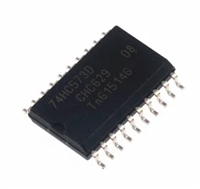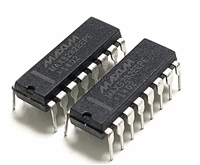As Figure 2-1 shows, a vertical strip sensor on the outside
of a container (or a vertical, insulated rod in the fluid) will
generate a long sloping signal. The desired trip point 'T' is
subject to a great deal of variation in location if the sensing
signal drifts much, for example due to changes in Cs or Cx
over the operating temperature range.
Signal
l2
T1
Figure 2-2 shows the response from a horizontal strip of
the same surface area; the signal exhibits a very rapid rise
in signal between points l1 and l2. Variations in circuit gain
or signal drift have much less of an effect on the trip point
with this orientation.
T1
l1
Level
l2
l1
In some cases (thin walled vessels for example) it may be
sufficient to have a small round or square electrode patch
on the exterior.
Figure 2-1 Signal vs. Level for an External Vertical Strip
Figure 2-3 shows the response from a twin-level external
electrode set. The use of two horizontal electrode planes
or tiers creates well-defined trip points that can be used to
sense both 'low' and 'high' levels. A crossing of threshold
T1 will be reflected in the OUT1 signal, while T2 will be
reflected on OUT2.
Signal
l2
2.1 EXTERNAL ELECTRODES
T1
l1
External electrodes should be electrically conductive; metal
foils and conductive carbon are both possible. Care should
be taken that other objects or people near the vessel will
not touch the electrode; in some cases shielding around
the electrode with grounded metal will be required to
prevent disturbances. If used, the shield element should be
spaced apart from the electrode by an air gap or a
low-density foam to reduce Cx loading.
T1
Level
l1
l2
Figure 2-2 Signal vs. Level for an External Horizontal Strip
Signal
The required surface area of the external electrode will
depend on the amount of signal needed to bracket the
detection threshold, which in turn will depend in part on Cs
and stray Cx. External electrodes sensing through thick
walls and/or sensing low permittivity fluids will require
larger surface areas than those sensing water through thin
plastic, for example. External electrodes are more likely to
require potentiometer trimming to achieve reliable
operation (Figure 1-1, also Section 3.2).
T2
l4
T2
l3
T1
l2
T1
l1
Level
Note that external electrodes used with conductive
solutions (i.e. aqueous liquids) do not measure the
permittivity of the fluid: they actually measure the
permittivity of the vessel wall, between 2 plates: the
electrode (plate 1) and the fluid (plate 2, effectively a
variable-area ground plate): if the fluid were to be replaced
with mercury the signal would be unchanged. A 20%
thickness variation in the vessel wall will therefore introduce
about a 20% variation in the resulting capacitance; if the
vessel wall cannot be controlled accurately enough in
production, serious sensing errors may occur.
l3 l4
l1
l2
Figure 2-3 Signal vs. Level for Twin Horizontal Strips
Numerous types of internal point-level probes are possible.
2.2.1 DISC
P
ROBES
The simplest internal geometry is probably a disc probe
(Figure 2-4), having at least one planar surface ('tier') parallel
to the fluid surface. The sensing error can be minimized by
making the tier thin, so that the signal transitions abruptly
higher (see Figure 2-2) as the fluid covers the tier.
When external electrodes are used to sense non-aqueous
substances (like oils or gasoline), the vessel wall dielectric
becomes a lessor contributor to the overall signal, which is
then heavily dominated by the permittivity of the fluid. The
lower the permittivity of the fluid the greater its dominance.
A notable difficulty with disc probes is the task of insulating
them with a uniform, repeatable thickness of insulation.
2.2.2 SPIRAL
W
IRE
PROBES
A spiral solid-wire probe is simple to construct (Figure 2-5),
and has the advantage of being pre-insulated in a wide
choice of plastics from inexpensive PVC to PTFE. These
probe types provide a large step-function of capacitance
localized at the desired trip point, and are easy to form.
2.2 INTERNAL PROBES
When used with aqueous fluids or other electrically
conducting liquids, internal probes should be insulated with a
plastic layer. See also Section 2.1 for a discussion of
electrodes when used with conductive fluids. Aqueous
probes should be 100% insulated, even on the cut end of a
wire probe. The slightest pinhole of exposed metal anywhere
on an immersed part of the probe will immediately convert
the probe into a bare-metal probe (see Section 2.2.5).
Spiral wire probes are most effective in water-based fluids;
they are not as effective in oils and other nonconductive
substances.
LQ
3
QT114 R1.04/1106






 一文带你了解ss8050参数、引脚配置、应用指南
一文带你了解ss8050参数、引脚配置、应用指南

 深入解析AD7606高性能多通道模数转换器:资料手册参数分析
深入解析AD7606高性能多通道模数转换器:资料手册参数分析

 74HC573三态非易失锁存器(Latch)资料手册参数分析
74HC573三态非易失锁存器(Latch)资料手册参数分析

 MAX3232 RS-232电平转换器资料手册参数分析
MAX3232 RS-232电平转换器资料手册参数分析
